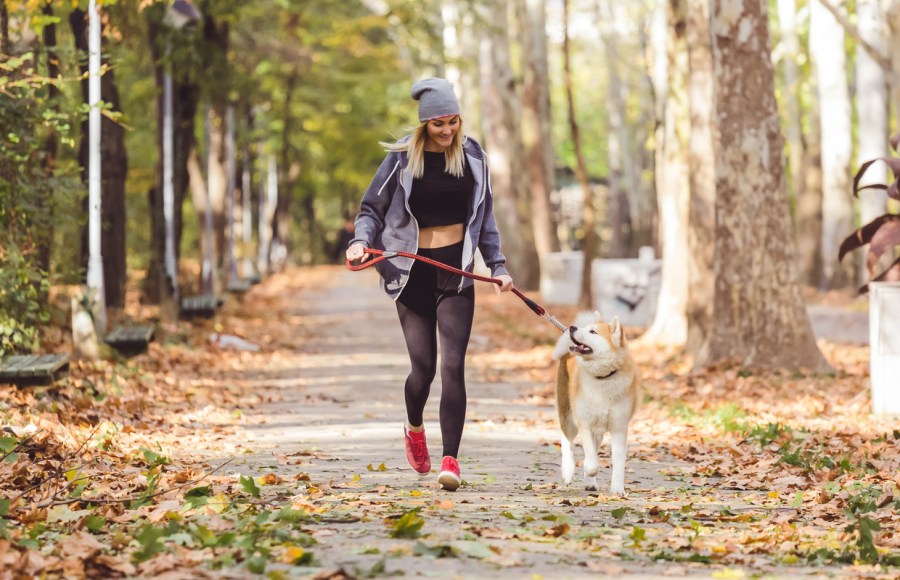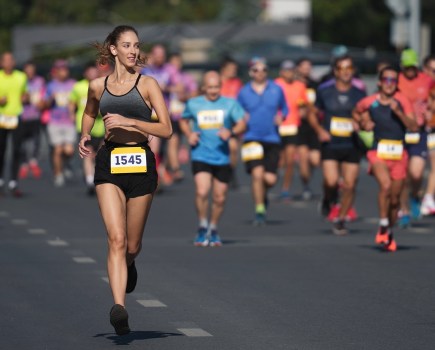Our furry friends are more than great snuggle buddies – they also make amazing running partners! If you’re planning to train with your loyal companion, it’s important to take certain precautions, to ensure the safety of both you and your pet. We chatted to Dr Scott Miller, BVSc MRCVS, veterinary surgeon and spokesperson for Dogtastic, who shares his top safety tips for running with dogs…
Lots of runners like to mix up their training, to prevent boredom and find new challenges. Running with a dog might be one such challenge, which could be a welcome change to spice up your running routine.
After all, what could be a better motivation than having your dog as a running buddy? However, there are quite a few dos and don’ts when it comes to training with dogs, so we spoke to Dr Scott Miller, spokesperson for Dogtastic, who shares his top tips on safetly running with dogs…
How old should your dog be before you start running with it?
The age at which you can safely run with your dog depends on their breed. ‘Each breed grows and develops at different rates,’ Scott explains. ‘Ultimately, you want them to be fully grown with bones at full length and growth plates fused before properly pounding the pavement.’
For most dogs reach, this will be at around 12-18 months of age. However, smaller breed dogs mature quicker, while larger breeds can take longer. Scott adds: ‘If you are a runner, then do not expect to convert a breed well known for laziness, but rather keep to active athletic breeds who will share your joy of running.’
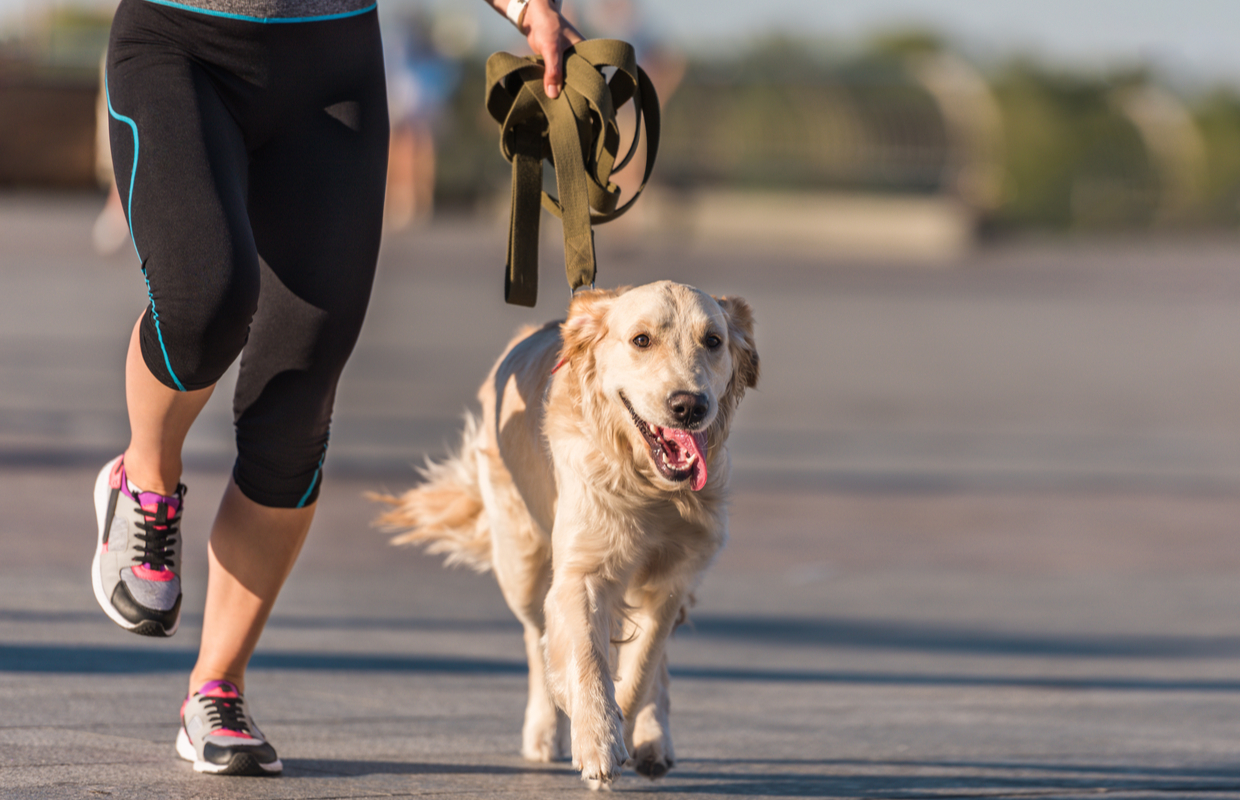
Which dog breeds are best for running?
Not all dogs will be on board for going running long distances. ‘Some dogs are better suited for running longer distances, while others would fare better sticking to shorter runs,’ Scott explains.
‘Dogs like Border Collies, Huskies, German Short Haired Pointers, Rhodesian Ridgeback, and Vizsla are a few breeds that make great long distance running partners.
A dog’s muscles are also a good indicator of its suitability for long-distance running. ‘If their muscles are sleek and long, then it is more likely they are suited to long-distance running. If the muscles are short and pumped up, then it is better to stick with shorter distances.’
How can I teach my dog to run alongside me?
Lots of dogs are prone to running in every direction, except forwards. If your dog tends to follow their nose and zig-zag while on walks, they might not be the best candidate for running – yet.
Before taking your dog out for a run, it’s important to first ensure they are able to walk alongside you safely. Once they learn to do this consistently, then you can gradually build up speed with them.
However, if there’s any sign of zig-zagging – return to walking immediately. The last thing you want is to fall over your dog while running, as this could seriously injure both of you.
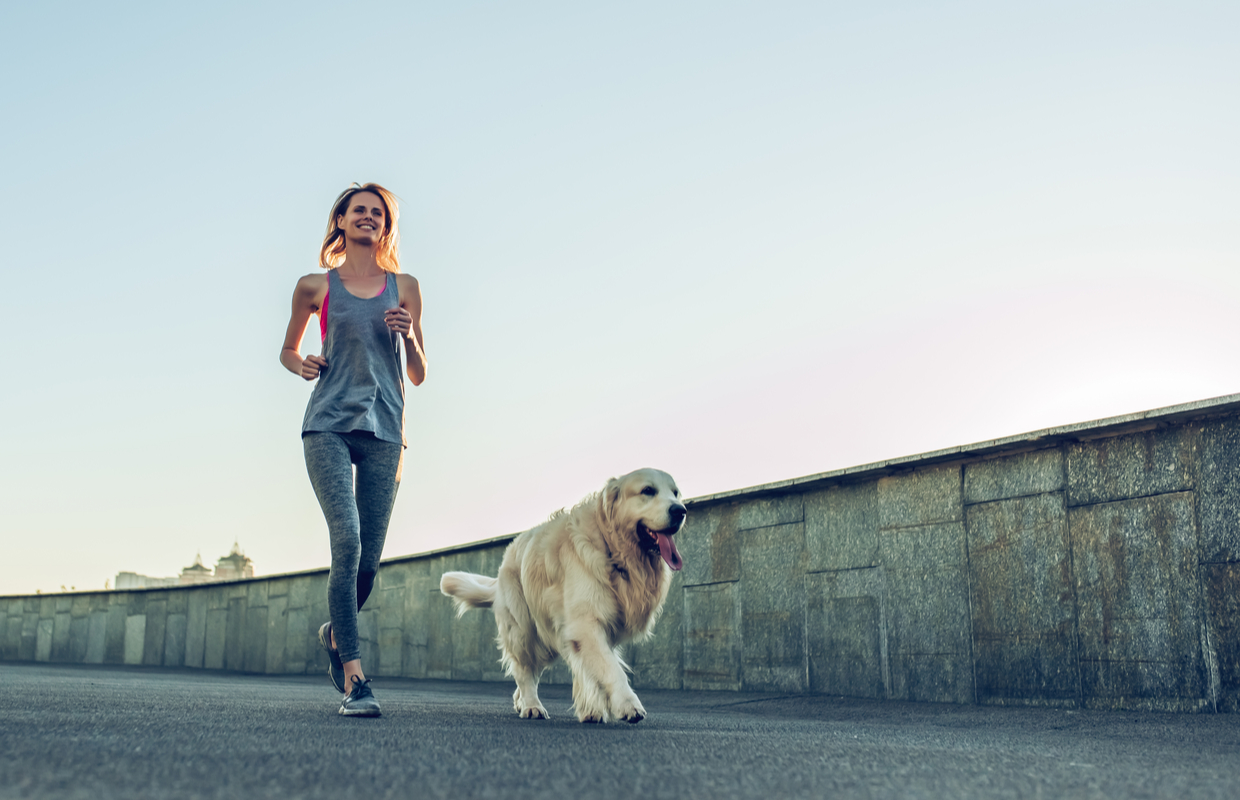
How should you build up the mileage when running with dogs?
If you’re a frequent marathon runner, it’s important not to expect your dog to share your level of endurance. Just like humans, dogs need to gradually build up their endurance over a prolonged period of time.
‘Increasing your dog’s endurance should be approached just like building up your own, with short runs and the use of walk breaks to get them in the swing of running,’ Scott explains.
What lead should I use when running with a dog?
When running with a dog, their regular lead for walkies might not be up to the job. If they suddenly bolt, the last thing you want is a non-stretchy lead, as this will yank and possibly injure both you and your dog.
Scott recommends using stretchy leads or a bungee cord (like this one from Canix). ‘Make sure your dog also has good basic training and response to commands. This will ensure greater enjoyment for both involved,’ Scott adds.
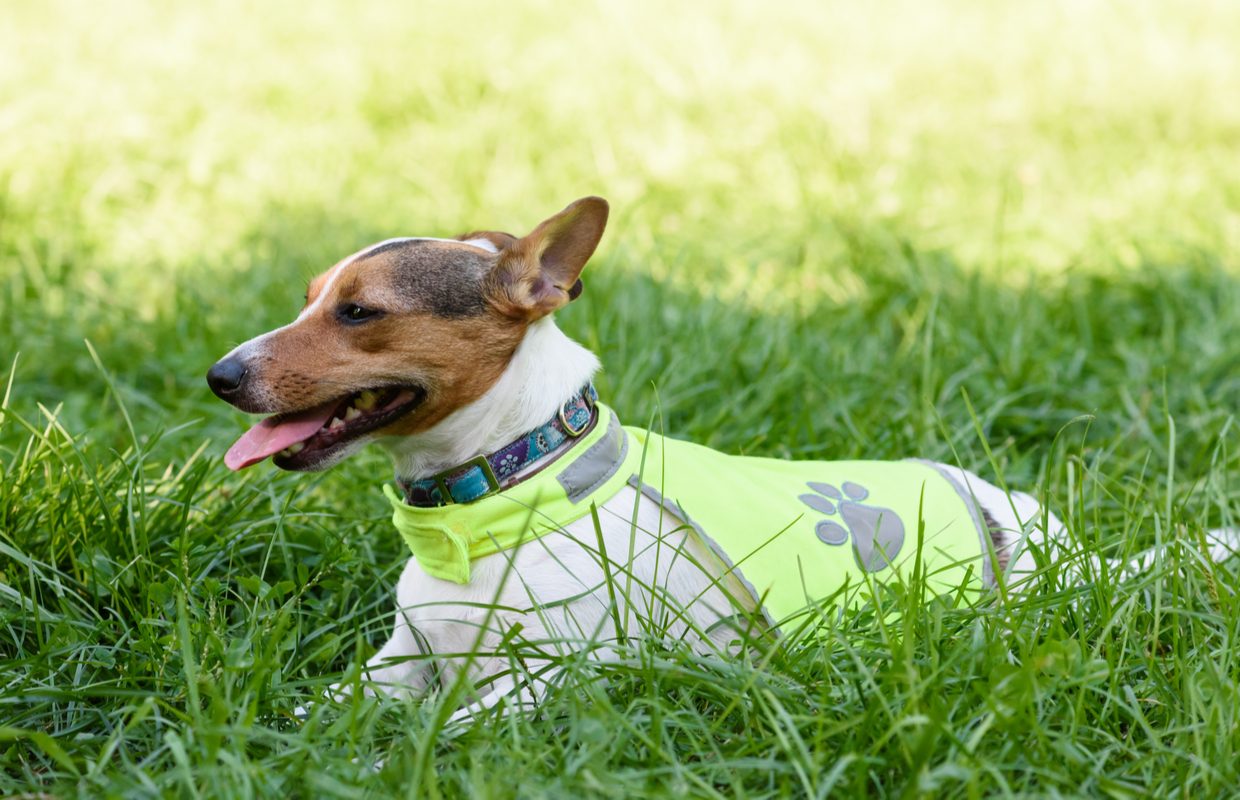
How can I stay safe on dark evenings when running with my dog?
Whenever you go for a run on dark evening, it’s important to wear reflective clothing to ensure you are visible to all road users. When running with your dog, it’s even more crucial to make sure you are both seen.
Alongside your own reflective running kit, we recommend buying clothing, a collar or a lead with reflective panels on. Try these reflective jackets from Proviz Sports (from £29.99). Each jacket is also waterproof, which your dog will certainly appreciate on those rainy runs!
How can I tell if my dog has overdone it on a run?
When you first start running with your dog, it’s important to pay close attention to how they respond, both during the run itself and afterwards. Scott tells us: ‘The signs of overdoing it in your dog would be sluggishness at the end of a run, resistance to going on them at all, breathlessness, and soreness the following day.’
‘If they struggle to get out of bed the day after a longer run, then give them a week off and reduce the run by half, possibly looping back home to drop them off to rest while you keep racking up the miles.’
For more expert dog advice, visit dogtastic.co. This platform offers unlimited and affordable digital vet care for just £24 for the first year.
Click here to discover the best workouts to supplement your running training!

